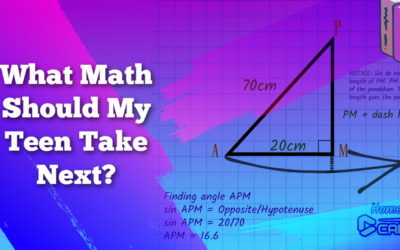Steps to evaluate a math textbook:
- Make sure the basic material is covered. Look at the outlines below as a guide. The wording and chapter arrangement may be different, but you should see these key ideas in the contents.
- Is there a well-written table of contents?
- Since you will be using the material for homeschooling, look for material with lots of worked examples. Go through some yourself and determine if they are easy to read and follow.
- Look for plenty of problems to work.
- Do you have the answers? We like the textbooks that have the answers to the odd-numbered problems for the students and then have the solutions to all the problems in the teacher’s manual. If they do not have the answers to many problems, your students will never know if they are doing the problems correctly.
- Look for some real-world examples and problems. Do the problems tell about real situations? This is key to helping your child see the use of the material.
- Look at some chapters. Are the key points of the chapter outlined in boxes or color so that they stand out? This makes it easy to use as a reference now and later.
- Is there a teacher’s reference that tells you how to use the book? If so, is it useful to you? Does it make sense to you?
- Is there an index?
- What does your student think? If you can, let them compare a few and ask which they like better.
Math materials (such as textbooks, videos, or computer-based teaching) should all cover the same material per course title. In fact, many textbooks will have the exact same chapter titles. So you can do a pretty good job evaluating the coverage of material based on the chapter and subchapter titles. Here are some typical titles or subtitles that should be keywords in your comparison of material. Note that these topics may not match your textbook exactly or be in the same order as listed below. But, a majority of the key points listed should be found.
To use this guide go to the table of contents and look for these keywords. You should not have to search the entire text or videos to find them.






